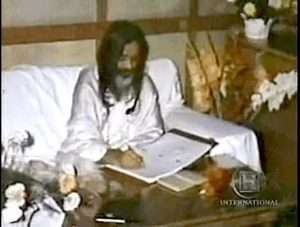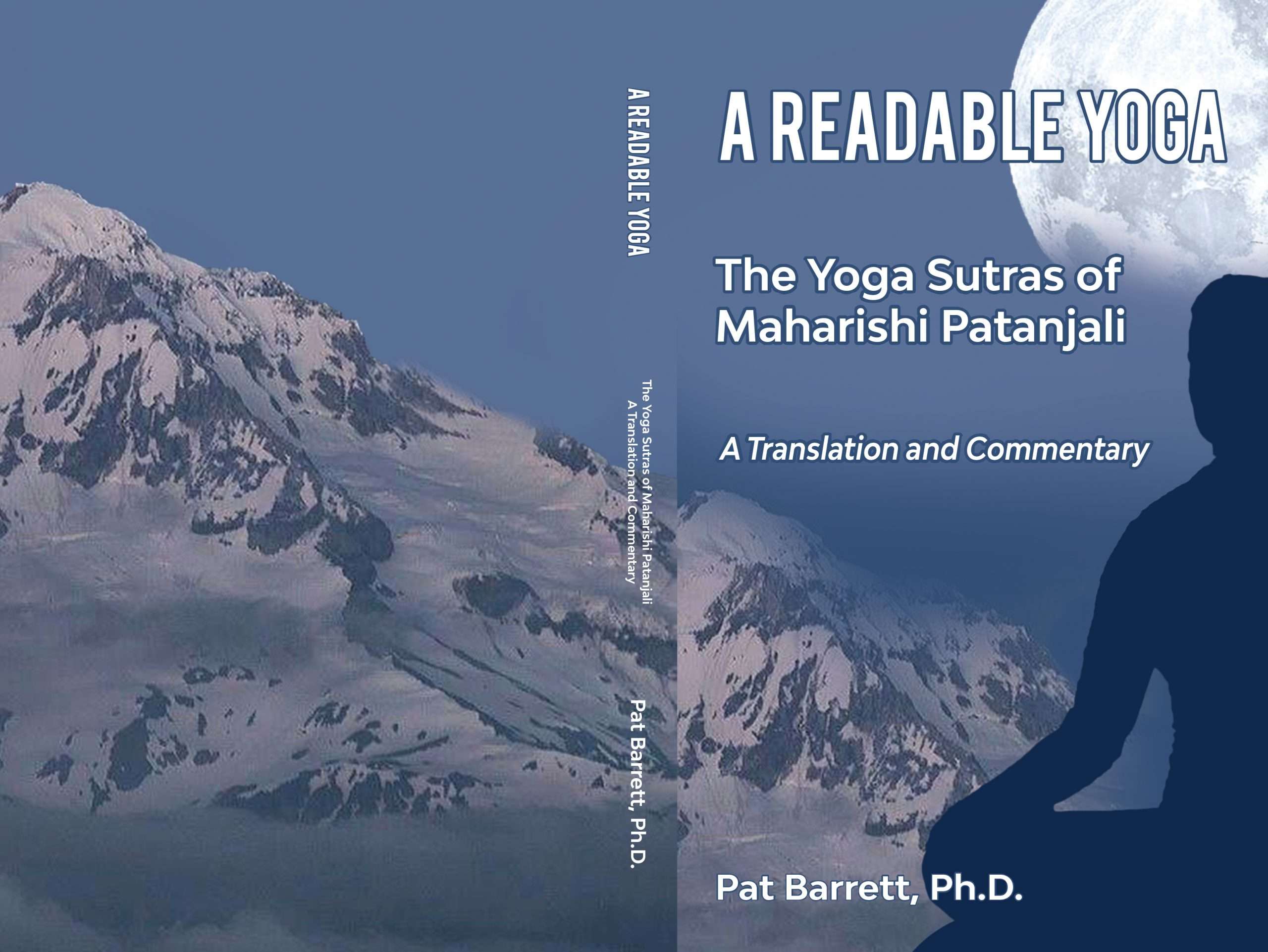Pat Barrett, the author of ‘A Readable Yoga’ talks about the inspiration that led to the writing of his book.
When the thought first came to go public with my translation of the Yoga Sutras, I had to recognize that the project could seem presumptuous. After all, despite some working understanding of Sanskrit, or at least the ability to know what I didn’t know, and how to get through it—how could I, without perfect enlightenment put forward an honestly representative version of the Yoga Sutras in English?
A Readable Yoga speaks personally to anyone practicing or aspiring to live the life of yoga in our modern world.
I know many people who love and enjoy this quintessential work by Maharishi Patanjali, but I had read no translation that allowed me to silence my “analytical mind”—and just let it soak in. This was because none of the translations available seemed to represent the definition of Yoga by my teacher Maharishi Mahesh Yogi .
Reading along, as the inherent silence of the verses flowed in symphonic sequence, I was always stopped abruptly. My mind would always jump, like when the music was disturbed as the needle scratches on the record. When a verse, or part of one, was translated in a way that seemed inherently wrong based on what I have been taught, it kind of ruined the experience.
The first step forward

I thought: “Maharishi Patanjali has the same title after all, so why can’t I assume that despite the centuries of distance between him and my teacher Maharishi Mahesh Yogi, they wouldn’t disagree on any of it?” The conclusion was, and it seems to me still, that if these two great rishis sat down together to have a chat about this thing that they both understood so intimately, they would find nothing to disagree about.
Before I ever considered bringing it out, I had been working on the translation of the Yoga Sutras for myself for over twelve years. All of it was nothing less than a personal labor of love. I would sit down to read it intending to immerse myself in the silence until after a while I’d hear that needle scratching again—read a little, need to stop and put some notes in the margins, read a little more, and need to stop again to look up a word in the Sanskrit/English dictionary, write it in, and on and on like that.
I could tell that I was getting somewhere when the time of silent uninterrupted continuum would get longer and longer. Every time I stopped, I would repeat the sutra that stopped me to think about why it didn’t seem right. What word or nuance of meaning was missing or incorrect? Sanskrit is an amazing language of infinite possibilities. Many translators believe that within any work of the Vedic literature, the meaning of any single word would be best translated the same throughout the entire work, but I don’t believe this is true for the Yoga Sutras.
[ruby_related heading=”Read More” total=5 layout=1 offset=5]
The cryptic nature of Sanskrit
The Yoga Sutras are very cryptic because they don’t follow conventional Sanskrit syntax. My conclusion about this is that they’re not explanatory in the usual format of the Vedic literature, but are more like haiku poems. To understand a haiku, one must attempt to experience something of “an emersion” in the culture of Japan—this is the way to see the innumerable layers of meaning.
The emersion necessary to understand the Yoga Sutras is for me an emersion in Maharishi’s teaching. Not that I tried to allow the words to tell me what was being said, but beginning with an intuitive sense of what aspect of his knowledge was being intimated; and then looked into the Sanskrit to find the word definitions that validated that assumption.
Often, the words of other translators held much of the meaning already. But, sometimes, the Sanskrit would match other aspects unique to the teaching Maharishi brought out. Often, the sutras tracked historical periods of Maharishi’s teaching over the many years of his mission.
Perhaps the unique understanding coming from his vision is that the Yoga Sutras lay out the three enlightened states of consciousness as he first delineated them to the modern world. Also, from my background as a practicing psychologist, I could see the master/student dialectic. The Yoga Sutras offer a most rewarding series of “Cliff-Notes” on everything Maharishi ever taught me—I hope others will have the same experience.
This work is about consciousness
Beyond what could be gleaned only from Sanskrit, the commentary offers a worldview that reaches past belief or faith. Scientific and historical evidence strategically illustrates the reality of altered and advanced states of consciousness, miraculous human abilities, and humans on this planet dating back beyond unimaginable spans of time. But A Readable Yoga isn’t about philosophy or history. This work is about consciousness—the transparent background of the mind that colors and informs our thoughts, our understanding, and our ability to appreciate the deepest joy of life.
Live the life of yoga in our modern world
Each paradigm of advanced consciousness is illustrated with the poetry of saints and spiritual luminaries from recent centuries. From widely diverse traditions and spiritual backgrounds, from all over the world, we hear the story of people who have entered these same distinctive levels of enlightenment originally codified in this seminal work on yoga.
 ‘A Readable Yoga’ speaks personally to anyone practicing or aspiring to live the life of yoga in our modern world. Each aphorism, though often directed to the Yogi of advanced experience, offers wisdom, inspiration, and insight to anyone who listens with a quiet heart. The book is available on Amazon
‘A Readable Yoga’ speaks personally to anyone practicing or aspiring to live the life of yoga in our modern world. Each aphorism, though often directed to the Yogi of advanced experience, offers wisdom, inspiration, and insight to anyone who listens with a quiet heart. The book is available on Amazon
Pat Barrett Ph.D. is a teacher of Transcendental Meditation and a licensed clinical psychologist/health service provider for 20 years.


















